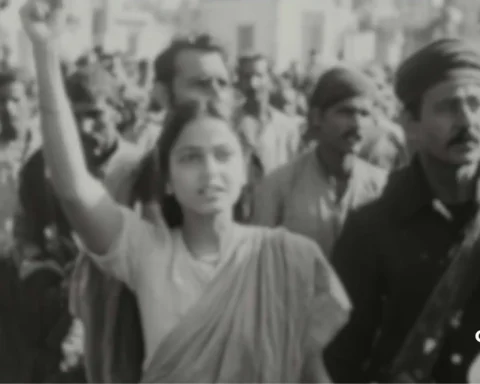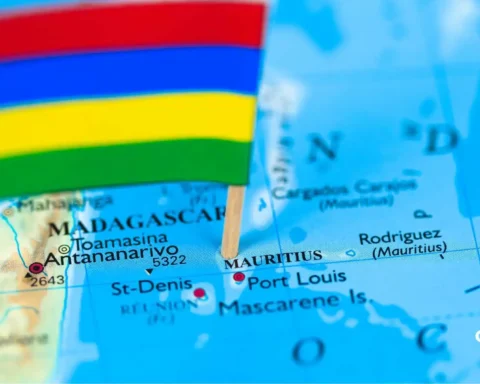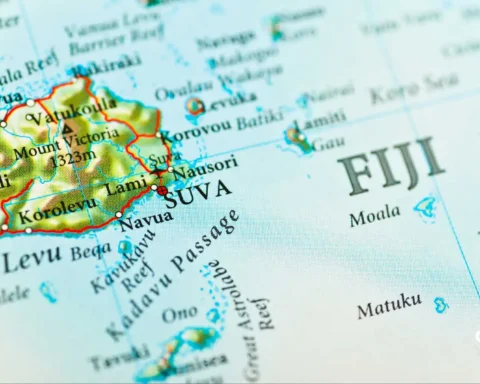The Indus Valley Civilization (IVC), a Bronze Age civilization, was one of the world’s earliest urban cultures, lasting from 3300 BCE to 1300 BCE, with its mature form from 2600 BCE to 1900 BCE. Its sites spanned a large area, including Pakistan, Northwestern India, and Northeast Afghanistan. Known for its well-planned cities, advanced drainage systems, and flourishing trade, the Indus civilization also exhibited a rich and diverse social structure.
The social life of the Indus Valley Civilization was shaped by its people’s occupations, religious practices, trade interactions, artistic expressions, and family dynamics. Additionally, the well-organized urban centers of the Indus River valley, like Harappa, Mohenjo-Daro, Kot Diji, and Dholavira, indicate a complex and progressive society with a high standard of living.
Table of Contents
The Social Life of the Indus Valley Civilization
Class Structure and Social Hierarchy
Daya Ram Sahni first discovered and excavated the ruins of Harappa in 1921, along with the Department of Archaeology. Since then, a lot has been uncovered about the Indus Valley Civilisation, especially the Mature Harappan and late Harappan phases, strengthening our contact with our predecessors and their way of living.
Unlike contemporary civilizations such as Mesopotamia and Egypt, where social stratification was more rigidly defined, the ancient civilization of the Indus Valley Civilization exhibited a more egalitarian society. While there were distinctions between different groups like merchants and artisans, there is no clear evidence of a ruling class or a monarch in the Indus Civilization. While some speculate the sculpture of “Priest King” to represent the ruler, there lies no proof of that.
The presence of large, well-built houses made from baked bricks alongside smaller dwellings in the Indus River valley indicates some level of social differentiation, but there were no massive royal places or royal tombs, suggesting the absence of a dominant ruling elite, also suggesting the late Harappan civilization to be a peaceful society.
The social life of the Indus Valley Civilization was highly systematic, as evident from their elaborate drainage system, or at least what remains of it. The society is predominantly matriarchal. This conclusion was reached by judging the idol of the “Mother Goddess”, to whom the late Harappans might have prayed. There were strong family organizations among the people of the Indus Civilization.

Occupations and Economic Life
The economic structure, working in tandem with the social life of the Indus Valley civilization, was based on agriculture, trade, and techniques of handicraft and metallurgy. Agricultural practices included cultivating wheat, barley, peas, and sesame while also domesticating animals such as cattle, sheep, and buffalo. Advanced irrigation techniques, because of the Indus River and granaries, indicate a highly organized system for efficient agricultural production. The discovery of standardized weights and measures suggests a sophisticated economic system. The decimal units of the divisions found in excavations also imply their familiarity with the decimal system.
Trade played a crucial role in social life, with clear evidence of a highly developed system of craft production and distribution. The trade networks integrated a huge area across Central Asia, including portions of Afghanistan, Persia connected by the Gulf of Oman from the Arabian Sea, northern and western India, and Mesopotamia. Iran and Afghanistan provided minerals, India provided lead and copper, China provided jade, while cedarwood floated down rivers from the Himalayas and Kashmir.
This ancient civilization established large maritime networks as seen by the earliest evidence of a plank watercraft equipped with a single central mast supporting a sail of cloth. Other than raw materials, other trade goods included terracotta pots, gold, silver, bronze vessels, beads, seashells, pearls, and colored gemstones like lapis lazuli and turquoise.
The presence of seals with inscriptions points to a well-developed system of commercial transactions, and some scholars suggest that these seals were used for branding trade goods or marking ownership. These seals, beads, and various other objects required materials from distant regions, facilitating trade across the Indus River valley. Artisans and craftsmen held an important place in society, producing high-quality pottery, jewelry, metalwork, and sculptures.
Family and Daily Life
Family was the basic unity of society and was central to the social life of the Indus Valley Civilization. Scholars estimate that the joint family system would have been prevalent. Archaeological evidence of female figurines, such as the “Mother Goddess”, suggests that women played a significant role in religious and social spheres. Women may also have been involved in household activities, pottery-making, and textile production.
The houses of the Indus Valley were made from baked bricks and were well-planned, with multiple rooms, a big central courtyard, bathrooms, and private wells, which sometimes also opened on the streets to provide public access, indicating a strong emphasis on hygiene and comfort. The different types of houses indicate different social classes. The drainage system was highly advanced, with covered sewers and well-laid-out streets, reflecting an organized and healthy urban lifestyle.
Men and women alike adorned themselves with ornaments like necklaces, armlets, finger-rings, bangles, etc, made of gold, silver, ivory, and semi-precious stones. The archaeological findings of spindles suggest the use of cotton and woollen fabrics to weave clothes. Grooming was an essential aspect of the social life of the Indus Valley civilization, as seen from the discovery of combs, mirrors, and cosmetic containers.
Religion and Rituals
Religious beliefs in the Indus Valley Civilization remain a subject of debate due to the absence of decipherable written records. However, the earliest evidence of various terracotta figurines, seals, and altars suggests a belief system centered on nature worship and fertility cults. The famous Pashupati seal, depicting a figure surrounded by animals, has been linked by the Department of Archaeology to a proto-Shiva deity, indicating early forms of Hindu religious traditions.
Worship of a mother goddess, symbolizing fertility and prosperity, was common. Numerous female figurines with elaborate headdresses suggest reverence for female deities. Additionally, the presence of fire altars in some sites implies ritualistic practices, possibly linked to Vedic traditions. Their burial practices suggest their belief in the afterlife, where they are buried with pots in a north-south orientation on their backs.
There is also evidence of public bathing areas in this ancient civilization, such as the Great Bath of Mohenjo-Daro, which may have had religious or purification significance. This suggests that communal rituals were an integral part of the social life of the Indus Valley civilization.
Entertainment and Artistic Expression
Games, toys, and dice have been discovered in Indus River valley excavation sites such as Kot Diji, indicating recreational activities. There have been findings of a cube dice with six sides and spots, similar to the present-day dice. The presence of terracotta figurines of animals and carts suggests that children had access to toys and playthings.
Art flourished in the form of pottery, sculptures, and intricate beadwork. The famous “Dancing Girl” bronze statue from Mohenjo-Daro highlights the artistic excellence of the Indus Valley civilization. It reflects not only the skills of Indus artisans but also hints at dance as a cultural practice.
Music and dance were likely integral to the religious and social life of the Indus Valley Civilization, though concrete evidence remains scarce. Social amusements included hunting wild animals, bullfighting, fishing along the Indus River valley, and clay modeling.
Conclusion
Evidently, the social life of the Indus Valley Civilization was rich, complex, and advanced, demonstrating remarkable achievements in the planning of urban centres, trade, art, and religious practices. Although the decline of the Indus Valley civilization around 1300 BCE remains a mystery, the Indus civilization left a lasting impact on subsequent cultures in the Indian subcontinent, including the Vedic and Mauryan periods, and continues to influence modern South Asian cultures.
Many of the Indus Valley’s urban planning concepts, craft traditions, and religious beliefs influenced later societies in Central Asia. Its emphasis on town planning, trade networks, and artistic expression serves as a testament to the ingenuity and sophistication of one of the world’s earliest urban societies.

FAQs
What was the social life of the Indus Valley civilization?
The social life of the Indus Valley Civilization was characterized by well-planned urban living, with a focus on hygiene, community organization, and economic activities like agriculture, trade, and craftsmanship.
What are the social features of the Indus Valley civilization?
The social features of the Indus Valley Civilization included a well-planned urban society with a relatively egalitarian structure, evident from the uniformity in housing and city layouts. People engaged in various occupations like agriculture, trade, and craftsmanship, with religious practices centered around nature worship.
What type of society was the Indus River Valley civilization?
The Indus River Valley civilization was an advanced, urban society characterized by well-planned cities, a thriving trade economy, and sophisticated infrastructure. There is evidence of skilled artisans, traders, and farmers but no clear signs of a centralized monarchy.









